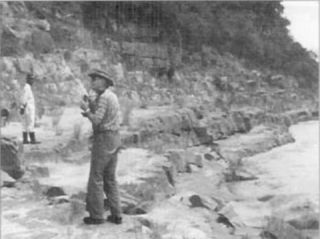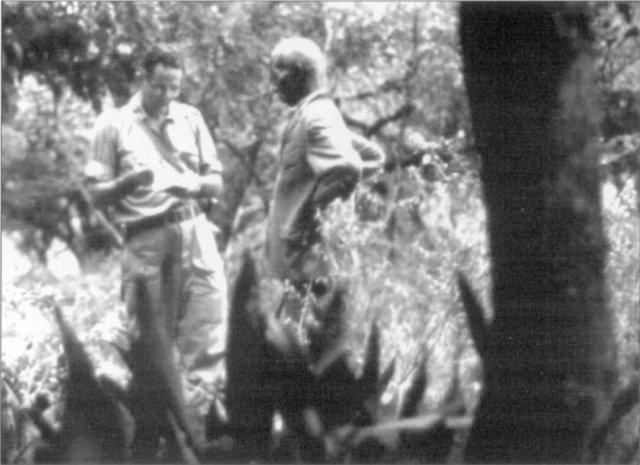

 The South African
The South African
'SB' Bourquin (as his friends and associates knew him) was born in Cathcart in the Eastern Cape in 1915, where his father was a missionary. He was sent to Maritzburg College where he became fascinated by Zulu history, culture and traditions, and used to spend hours in the library studying the subject. Thereafter, he attended Stellenbosch University, where he attained a BSc degree. He learnt how to speak isiZulu, which stood him in good stead when he joined the Durban Corporation's so-called Native Affairs Department in 1950. The Nationalist Government changed the name to Bantu Affairs in 1954.
During his tenure, he attended the funeral of Prince Mshiyeni, son of King Dinuzulu kaCetshwayo, and he and three other officials were asked at the last moment to act as pallbearers - the first white people to have participated in the funeral of Zulu Royalty. SB's friendship with the Zulu Royal House continued from King Nyangayezizwe Cyprian Bhekuzulu kaSolomon to the present king, HM King Goodwill Zwelithini kaBhekuzulu. He was also a personal friend of Prince Mangosuthu Buthelezi.
SB retired from what eventually became the Port Natal Administration Board in 1979. During his tenure in this organization, the authority of which stretched from the Transkei to the Mozambique border, and inland for 50 km, SB had to implement the removal of the shack settlements in Cato Manor, and the townships of KwaMashu and Umlazi were built under his direction. His collection of photographs and documents of this era form an integral part of the KwaMuhle Museum, now situated in what used to be his offices in Ordnance Road, Durban. SB was highly critical of the Nationalists' rigid Apartheid policy and told me that 'I made it my policy to use discretion in applying legislation in the most humane, sensible and lenient way possible.'

Sighart Bourquin at KwaNkatha
He will, however, be best remembered for his vast knowledge of the military, social and cultural history of KwaZulu-Natal. His fluency in isiZulu resulted in him being highly respected, and he became known to the Zulu people as 'Makhanda-khanda' ('The man with many heads' or 'the man who thinks with many heads'. If asked something that he could not answer immediately, he would consult his comprehensive library, return with the answer and it would be said that he ' ... goes away and thinks with another head'). His admiration for the Zulu people resulted in him being invited to many tribal functions and ceremonies.
It was a unique treat to have been able to accompany SB to some of the most remote areas of KwaZulu-Natal to undertake research or simply to visit an historical site. On one such occasion, a group of four members of the Durban Branch of the South African Military History Society joined him on a journey to the grave of King Cetshwayo kaMpande near the Mome Gorge, on the fringe of the Nkandla Forest. Ironically, we were all required to have the permission of the then Commissioner for Bantu Affairs - including SB! It involved a long walk through mountainous country and when we eventually arrived at the sacred grove housing the King's grave, we were informed that we would be required to obtain the permission of the custodian first. This entailed another mountainous climb, and we were met at an umuzi (homestead) by the custodian, the late Mr Hambayedwa Shezi. Hambayedwa enquired who we were and refused point blank to allow us to enter the area of the grave until SB could prove our bona fides. 'And who are you?', he asked him. When SB identified himself, Hambayedwa refused to believe him, saying that it was incomprehensible that the legendary 'Bourquini' would have taken the trouble to journey to such a remote place to 'hlonipha' (pay respects to) the late king. Nonetheless, we were escorted to the grave, after which Hambayedwa insisted that we return to his umuzi to partake in some traditional Zulu hospitality. SB, in turn, invited him to visit him at his office, which this grand old Zulu duly did a week later to satisfy himself, accompanied by a retinue of followers. He happened to be the inkosi of the influential Shezi people, and a direct descendant of the legendary Sigananda Cube.

Seen here in typical pose, SB makes notes while conferring with
Hambayedwa Shezi at the grave of King Cetshwayo kaMpande
near Nkandla in 1972. (Photo by Midge Carter).
Frequent visits by Zulu friends were made to the Bourquin's homes in Overport and Westville - something that was frowned upon by Pretoria. SB's military career included a spell in the Natal Field Artillery, Durban North Commando (holding the rank of commandant now lieutenant colonel) and he became second-in-command of Group 10.
SB was a founder member of the South African Military History Society and helped to establish the Durban (now the KwaZulu-Natal) Branch, serving as chairman for many years. Under his guidance, it grew from an informal discussion group of a handful of members to a highly regarded and internationally respected organization. He was also a member of the South African National Society, the Gunners' Association, the KwaZulu-Natal Heritage Foundation, and many other cultural bodies. When asked for advice on military history matters, the Department of Foreign Affairs referred the enquirer to SB. One of these was the late Donald R Morris, whose epic book, The Washing of the Spears, was the first comprehensive history on the Anglo-Zulu War of 1879. Morris wrote, in his foreword: 'Several debts are even greater. Mr Sighart Bourquin, Director of Bantu Administration in Durban, is an outstanding authority on Zulu history. Time and again he was able to track down information for me or to correct a point. His collection of photographic material on Zulu history is unparalleled .. .' Fortunately for KwaZulu-Natal and South Africa, this material has been lodged with the University of KwaZulu-Natal's Campbell Collections for the benefit of future generations.
Similar acknowledgements, often repeated in dozens of definitive works on the history of KwaZulu-Natal, will be a lasting memorial to this great historian. SB is survived by his wife Hilda, and children Randolph, Desire and Harald.
Ken Gillings,
South African Military History Society KwaZulu-Natal Branch
Return to Journal Index OR Society's Home page
South African Military History Society / scribe@samilitaryhistory.org